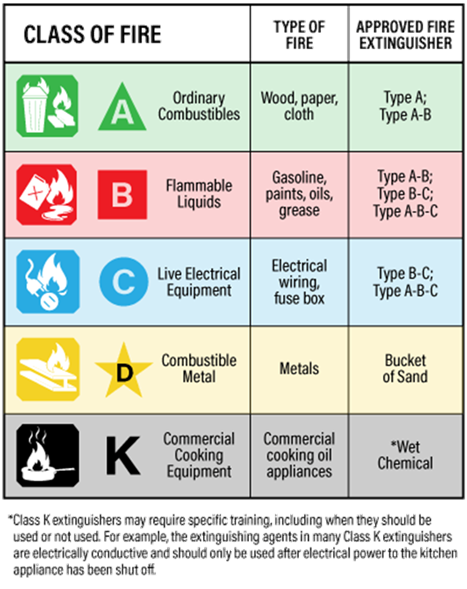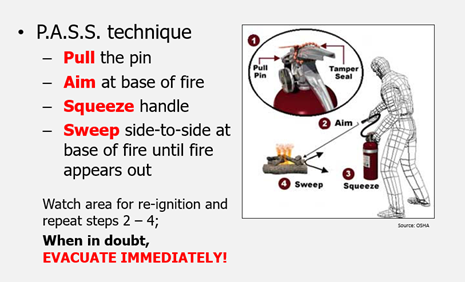First Aid Firefighting - Portable Extinguishers
- cbeckman98
- Aug 8, 2023
- 2 min read

Fire extinguishers are present in all commercial occupancies and in most homes. Commercial vehicles are also equipped with portable fire extinguishers. Despite their widespread presence, most people have very little understanding about these first aid firefighting tools.
If you need a fire extinguisher, you need the fire department!
If a fire alarm system is present, activate the alarm and summon assistance. Evacuate the premises and conduct a head count to account for all occupants. If no alarm system is present dial 911, evacuate the premises and conduct a head count. All fire trucks have reverse, they do not have warp speed to move back in time to when you should have called.
Classes of Fire

Not all fires are created equally, so the extinguisher must be matched to the type of fire that is burning. The chart below shows fire classes, typical fuels and the pictograms used on fire extinguishers to identify their appropriate use.
You should be familiar with the types of fuel present in your workplace and home. Compare the fuels present to the fire extinguishers present to be sure you have the correct extinguishers.
The most common fire extinguishers are multipurpose dry chemical fire extinguishers. These are compatible with Class A, Class B and Class C fuels.
There are special extinguishers for combustible metal (Class D) and for commercial cooking exposures (Class K). These extinguishers are for these fuels only.
Class K extinguishers are used when a wet chemical fire suppression system is present in a kitchen. This agent is compatible with the wet chemical agent in the kitchen fire suppression system. Other types of extinguishers may degrade the effectiveness of the wet chemical system.
Using a Fire Extinguisher Safely
We will repeat the first rule of fire extinguisher use – Call the fire Department!
The second rule is to be sure you have a clear escape route! If you have any doubts, evacuate!

Inspection and Maintenance
Fire extinguishers should be visually inspected monthly to confirm the pressure is adequate. An annual inspection by a professional service is needed to evaluate the shell and to check for any needed shell testing. Extinguishers are a pressure vessel and require periodic shell tests for integrity.
Number and Spacing of Extinguishers
The National Fire Protection Association publishes NFPA 10 the Standard for Portable Fire Extinguishers. This standard defines each location by hazard type and defines the proper size and distance between extinguishers. You can access this standard for free at www.NFPA.org
The Driehaus Difference
Fire extinguishers remain a top risk control recommendation from insurance carriers. Contact us to help you understand the details behind this often-overlooked tool. We suggest you ask your local fire department if they can help you with hands on extinguisher training. Your fire extinguisher service firm is another source of training. Contact us at 513-977-6860 or via our website www.driehausins.com for any assistance you may require.




Comments